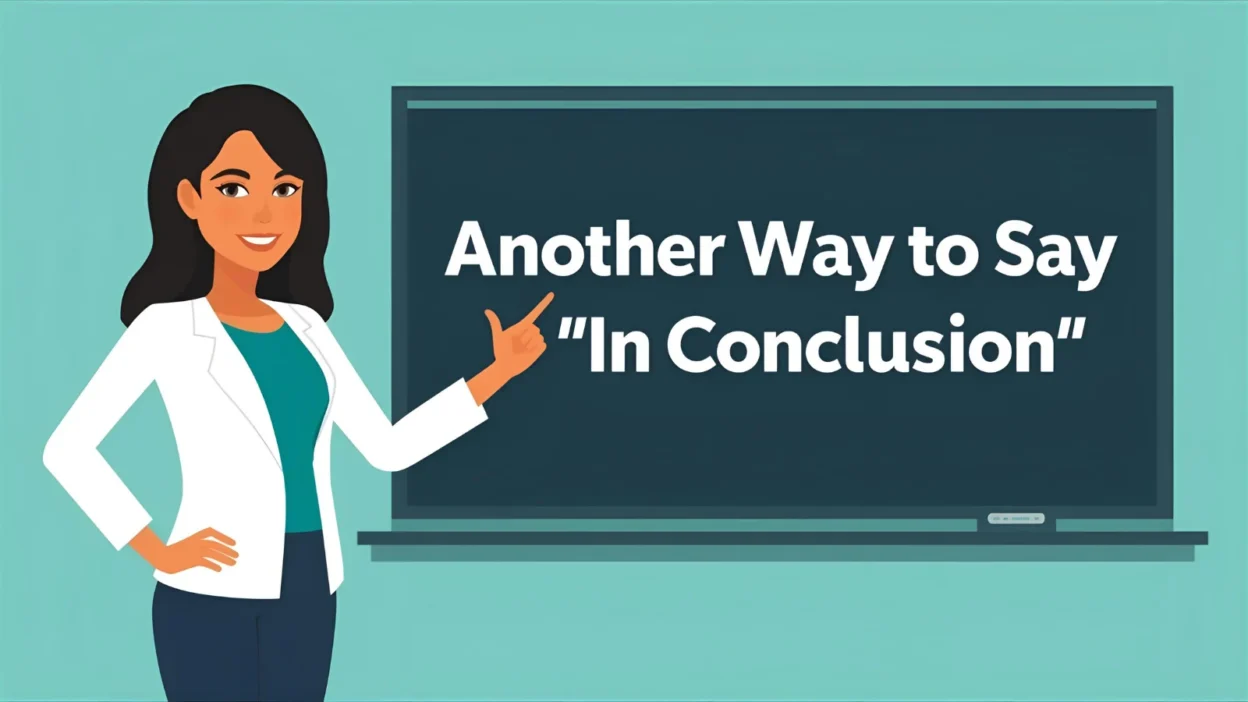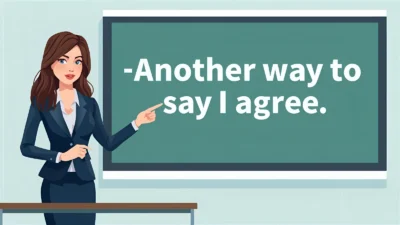The phrase “in conclusion” is one of the most common ways to wrap up an essay, presentation, or speech. It signals to your audience that you are summarizing your points and moving toward the final thought. While effective, using “in conclusion” repeatedly can sound formulaic or dull. By learning alternative expressions, you can tailor your ending to sound more polished, persuasive, or conversational depending on your audience.
In this article, you’ll discover 39 strong alternatives to “in conclusion” with meanings, explanations, examples, best uses, and tone descriptions.
1. To Sum Up
Meaning: Quickly summarizes main points.
Example: “To sum up, teamwork and communication are the keys to success.”
Best Use: Speeches, presentations.
Tone: Clear, concise, accessible.
2. In Summary
Meaning: Provides a condensed version of ideas.
Example: “In summary, the study confirms our hypothesis.”
Best Use: Reports, academic writing.
Tone: Neutral, professional.
3. All in All
Meaning: Gives an overall perspective.
Example: “All in all, it was a successful event despite the challenges.”
Best Use: Conversational writing, speeches.
Tone: Informal, reflective.
4. To Conclude
Meaning: Signals the ending directly.
Example: “To conclude, we must act now to address climate change.”
Best Use: Essays, debates, formal talks.
Tone: Direct, formal.
5. In Closing
Meaning: Wraps up thoughts, often in speeches.
Example: “In closing, I want to thank everyone for their support.”
Best Use: Presentations, public speaking.
Tone: Polite, professional.
6. Overall
Meaning: Provides a general final perspective.
Example: “Overall, the project achieved its goals on time.”
Best Use: Reports, summaries.
Tone: Neutral, concise.
7. Finally
Meaning: Marks the last point or ending.
Example: “Finally, we must ensure equal access to resources.”
Best Use: Formal writing, speeches.
Tone: Strong, structured.
8. To Wrap Up
Meaning: Informal way to close.
Example: “To wrap up, let’s review the key steps for tomorrow’s launch.”
Best Use: Meetings, casual talks.
Tone: Friendly, conversational.
9. Last but Not Least
Meaning: Highlights the final important point.
Example: “Last but not least, we must celebrate our achievements.”
Best Use: Speeches, casual contexts.
Tone: Warm, engaging.
10. To Recap
Meaning: Reviews key ideas quickly.
Example: “To recap, the new policy will benefit both staff and management.”
Best Use: Presentations, meetings.
Tone: Clear, conversational.
11. In Brief
Meaning: Gives a short summary.
Example: “In brief, we recommend adopting the new software.”
Best Use: Reports, summaries.
Tone: Professional, concise.
12. Thus
Meaning: Shows a logical ending.
Example: “Thus, the results prove our initial assumption correct.”
Best Use: Academic writing, formal contexts.
Tone: Logical, formal.
13. As a Final Point
Meaning: Highlights the last idea.
Example: “As a final point, remember that persistence is key.”
Best Use: Debates, persuasive writing.
Tone: Formal, strong.
14. Wrapping Up
Meaning: Informal way to summarize.
Example: “Wrapping up, I’d like to thank everyone for their hard work.”
Best Use: Team talks, casual writing.
Tone: Friendly, relaxed.
15. At the End of the Day
Meaning: Gives the ultimate takeaway.
Example: “At the end of the day, our success depends on collaboration.”
Best Use: Speeches, informal discussions.
Tone: Conversational, reflective.
16. Summing It All Up
Meaning: Brings all points together.
Example: “Summing it all up, the campaign exceeded expectations.”
Best Use: Speeches, reports.
Tone: Neutral, flexible.
17. In Essence
Meaning: Distills the core idea.
Example: “In essence, the strategy focuses on customer satisfaction.”
Best Use: Essays, articles.
Tone: Formal, thoughtful.
18. To Put It Simply
Meaning: Gives a simplified summary.
Example: “To put it simply, innovation drives growth.”
Best Use: Teaching, explanatory writing.
Tone: Clear, conversational.
19. Ultimately
Meaning: Presents the final result or truth.
Example: “Ultimately, success comes down to persistence and effort.”
Best Use: Formal writing, persuasive speech.
Tone: Confident, formal.
20. On the Whole
Meaning: Gives an overall perspective.
Example: “On the whole, the event was a success.”
Best Use: Reports, summaries.
Tone: Balanced, neutral.
21. As Shown
Meaning: Wraps up by pointing back to evidence.
Example: “As shown, the data confirms our predictions.”
Best Use: Academic, research papers.
Tone: Analytical, formal.
22. In Short
Meaning: Provides a quick summary.
Example: “In short, we must rethink our approach.”
Best Use: Essays, articles, casual writing.
Tone: Neutral, concise.
23. To End With
Meaning: Introduces a final thought.
Example: “To end with, I encourage you to stay motivated and curious.”
Best Use: Speeches, presentations.
Tone: Friendly, engaging.
24. Therefore
Meaning: Shows logical outcome.
Example: “Therefore, we conclude that the hypothesis is valid.”
Best Use: Academic, analytical writing.
Tone: Logical, formal.
25. Bringing It All Together
Meaning: Combines all points into a final idea.
Example: “Bringing it all together, teamwork is the foundation of success.”
Best Use: Presentations, speeches.
Tone: Warm, unifying.
Conclusion
The phrase “in conclusion” is clear and effective, but it isn’t the only way to wrap up your thoughts. Whether you want to sound formal (“thus,” “ultimately,” “therefore”), casual (“to wrap up,” “all in all”), or persuasive (“as a final point,” “at the end of the day”), you now have a full toolkit of alternatives. By choosing the right expression, you can leave a lasting impression and make your communication more engaging and professional.



